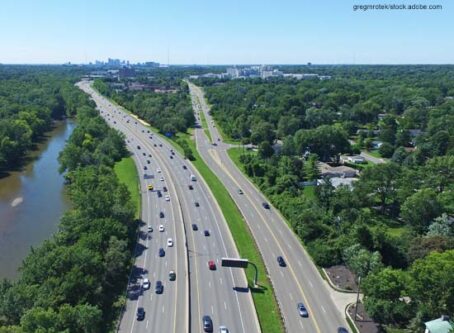Research suggests lower speed limits can increase number of crashes
Conventional wisdom suggests that lowering speed limits saves lives by reducing the number and severity of crashes. However, one research paper shows that science suggests the opposite.
In a paper titled “Safety and Operational Impacts of Setting Speed Limits Below Engineering Recommendations,” researchers at Pennsylvania State University’s Department of Civil and Environmental Engineering looked into what happens with crash rates when speed limits are lowered. They found that it all depends how much you decrease the speeds.
Using data from rural roads in Montana, researchers collected speeds and historical crash data at several sites where the posted speed limit was set equal to engineering recommendations and at sites where the posted speed limit was below recommendations. Researchers also calculated mean driving speed, 85th percentile driving speed, and overall speed limit compliance.
When speed limits were lowered 5 mph below engineering recommendations, researchers discovered a statistically significant reduction in fatalities and injuries, property damage only and total overall crashes. However, areas where speed limits were 10 mph below recommendations experienced a decrease in property damage only crashes, but fatality/injury crashes increased.
“For a variety of reasons, including the presence of school zones, citizen requests, political pressure, and perceived safety issues, posted speed limits are sometimes lowered to values below engineering recommendations,” the study says. “In fact, a recent survey of state highway transportation agencies found that this practice is fairly common throughout the United States.”
Due to small sample sizes, the effects of speed limits 15-25 mph below engineer recommendations were considered “less clear.” However, results did reveal an increase in total, fatal/injury and property damage only crashes.
In regards to speed limit compliance, conventional wisdom and science agree with one another. Essentially, speed limit compliance worsened as the difference between the engineering recommended and posted speed limits increased. Law enforcement also played a role.
“The presence of verified heavy police enforcement reduced both mean and 85th-percentile operating speeds by approximately 4 mph and increased speed limit compliance,” researchers found.
Drivers were 1.117 times more likely to comply with posted speed limits during heavy enforcement. Light enforcement, defined as highway patrol vehicles making regular passes through these locations, revealed insignificant effects on observed speed.
However, when the posted speed limit is less than engineer recommendations by 15 mph or more, drivers choose not to drive speeds consistent with posted speed limit.
Motorists were 2.4 times more likely to obey posted speed limits when they were set higher at 50 or 55 mph and 4.3 times more likely when posted between 60 and 70 mph.
The study did not collect data on increased speed limits. However, researchers did cite previous studies that suggest when speed limits increase, driving speeds increase but “by an amount less than the speed limit increase.” Studies also suggest that increasing speed limits leads to higher crash frequency and severity.
“Large reductions in the speed limit might simply not be obeyed by some drivers, since other roadway cues are not consistent with the low posted speed limit,” researchers concluded. “This could create large variations in operating speed among drivers, which might possibly explain some of the increased crash frequencies.”









